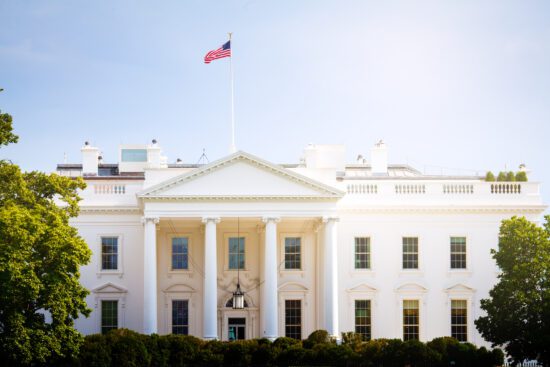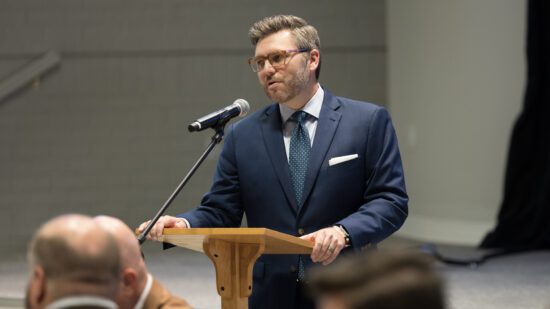As church leadership learns about abuse and begins to formulate policies, there is more work to be done—the church must be prepared to respond appropriately to disclosures of abuse in a loving, Christ-honoring way. Abuse of children is a sin and is against the law. In addition to preventative protection policies, churches must consider and think through what it looks like to walk with a child (and the family) when there has been a disclosure of abuse. Your child protection policies must cover how your church will respond when there is a disclosure of abuse.
Upon hearing a disclosure of abuse, church leadership must begin to think of what happens next. This is where good policy will provide direction and help as you navigate through crisis, caring well for the survivor in front of you, but also making sure that steps are taken to protect this child, as well as others going forward. Our initial responses should always be a listening stance and to just be with the individual as he or she confides in us and seeks help. Listen, do not judge, do not ask leading questions, and begin to think about what comes next.
First and foremost, upon a disclosure of abuse, your priority is the safety of the child. When the disclosure of abuse comes from a child, you must also turn to your legal obligation to report to child protective services or law enforcement. Your child protection policies should cover your state’s requirements for reporting and clearly state the process for reporting and documentation that must be maintained. All states have mandatory reporting laws and systems to screen and investigate reports of abuse and neglect.
As you look to formulate or review your protection policies, there are multiple facets of child abuse reporting laws that must be understood and clearly explained in your policy. Making connections in your community with a child protective services employee or a social worker will be helpful in preparing you for that moment when you receive a disclosure of abuse. Being informed and knowing the law in your state will help you care well for the child and family, as well as the others that may be in the path of the offender.
As you create or evaluate your child protection policies, make sure that your policies address the following areas regarding mandated reporting of abuse:
Who must report?
States fall into two categories in regard to mandated reporting—some states have a list of designated professionals who are mandated reporters while others designate all adults as mandated reporters. In the states that designate specific professionals as mandated reporters, the list includes individuals whose profession puts them in contact with children and in a position to observe or learn about suspected abuse. Some examples of the types of persons listed are school employees, childcare workers, counselors, law enforcement, coaches, medical workers, and members of the clergy. Familiarize yourself with who your state designates as mandated reporters.
Keep in mind that even if your profession or position is not considered a mandated reporter, all states allow and encourage permissive reporting. The reason that these laws are in place is because children who are being abused are often isolated and unseen; the state hopes that someone who comes in contact with a child may become aware so that the appropriate authorities can get involved to protect the child. Your child protection plan should reference your state laws regarding reporting and note who within your church is a mandated reporter. Keep in mind that a mandated reporter is individually obligated to report even when the suspicion arises in their organizational capacity.
What must be reported?
State laws require that known or suspected child abuse be reported. Your child protection plan should reference the definition of child abuse in your state. Child abuse definitions vary from state to state, and some define the abuse based on the relationship of the perpetrator to the child. Take some time to understand how your state defines child abuse.
In addition, all states have a standard of knowledge of the abuse that triggers one’s legal obligation to report. The language varies from state to state—“cause to suspect,” “reasonable suspicion,” “reasonable belief,” “reasonable cause to suspect,” or “knows or has reason to suspect,” but the meaning is very similar. Clearly if you have direct knowledge and proof, there is no question about your reporting obligation; however, that is usually not the case. The standard in most states requires more than a feeling or suspicion, but far less than certainty. The person must evaluate the full circumstance to make a determination. The laws do not require that reporters have firsthand knowledge of abuse nor does it encourage reporters to verify or investigate.
Time frame for a report
Most state laws set forth a time for reporting. Include this in your protection policies.
To whom does abuse get reported
State laws designate the agencies that receive reports of child abuse. Some states require reports to child protective services, while others urge reporters to contact law enforcement. Determine where a report of child abuse should be reported, and document this within your plan. Sometimes a report of abuse may not fit the jurisdictional requirements of child protective services; however, it might be considered a crime. A call to your local law enforcement should be made to make sure that there is documentation of abuse.
Other helpful information
Compile a resource list to attach with your policies that includes your jurisdiction’s contact information for child protective services, law enforcement, and child advocacy center, as well as the national child abuse hotline and your state’s sister organization.
Finally, in developing your protection plan, it is imperative that you understand your state’s stance on clergy-penitent privilege and address it within your plan.
This is part four of a five-part series. (Read: Parts one, two, three, and four). Visit caringwell.com to learn more about the Caring Well Challenge and help make your church safe for survivors and safe from abuse.
The content of this post is provided for general informational purposes only, and may not reflect the current law in your jurisdiction. No information contained in this post should be construed as legal advice. Please seek legal counsel from an attorney licensed in your jurisdiction.










